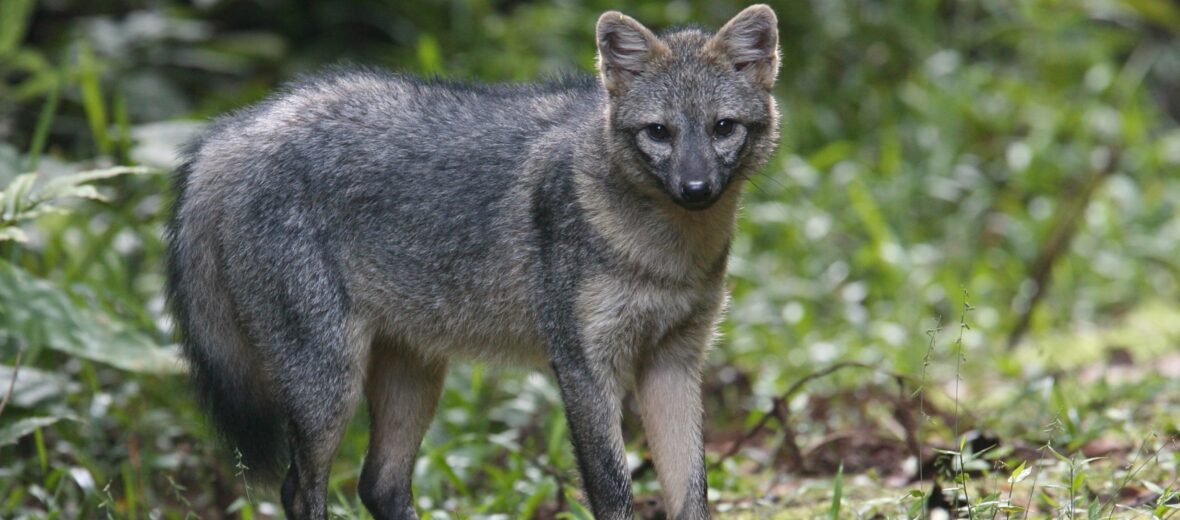
The crab-eating fox hails from northern and central South America. There are 5 known subspecies of these foxes. They prefer deciduous forests, subtropical forests, grasslands, and savannas. Crab-eating foxes have been around for approximately 3.1 million years. Despite suffering from habitat loss and the effects of disease and invasive species, these foxes are still listed as Least Concern by the IUCN.
First the Stats…
Scientific name: Cerdocyon thous
Weight: Up to 13 lbs.
Length: Up to 2.1 feet, plus up to an 18 inch tail
Lifespan: Up to 11.6 years
Now on to the Facts!
1.) Crab-eating foxes are nocturnal (active at night) and crepuscular (active at dawn and dusk).
2.) Even though they are perfectly adapted at digging their own burrows, they prefer to take over abandoned burrows and dens of other animals.
3.) A group of foxes is called a skulk, earth, leash, lead, or troop.
4.) Their typical sounds are barks and howls. But they will also make a whirring noise when pairs get separated.
5.) These omnivores (eat plant and animal matter) prey on crabs (naturally), fish, reptiles, birds, insects, mice, rats, eggs, and they also eat fruit. In a pinch, they will also dine on carrion (dead animals).
But wait, there’s more on the crab-eating fox!
6.) The crab-eating fox is monogamous (mates for life).
7.) Females birth up to 6 cubs, after up to a 59 day gestation (pregnancy).
Did you know…?
These foxes can run up to 30 mph and jump up to 3 feet vertically.
8.) Cubs are born altricial (blind and helpless). Their eyes open at 2 weeks. They are weened at 3 months.
9.) The Latin name “Cerdocyon” is derived from the Greek “kerdo”, which means fox. Where “cyon” means dog. The secondary name “thous” means jackal.
10.) They go by other names too, like: wood fox, forest fox, bushdog, common fox, common zorro, zorro, and maikong.
Now a Short Crab-Eating Fox Video!
Be sure to share & comment below! Also, check out the Critter Science YouTube channel. Videos added frequently!
Want to suggest a critter for me to write about? Let me know here.



